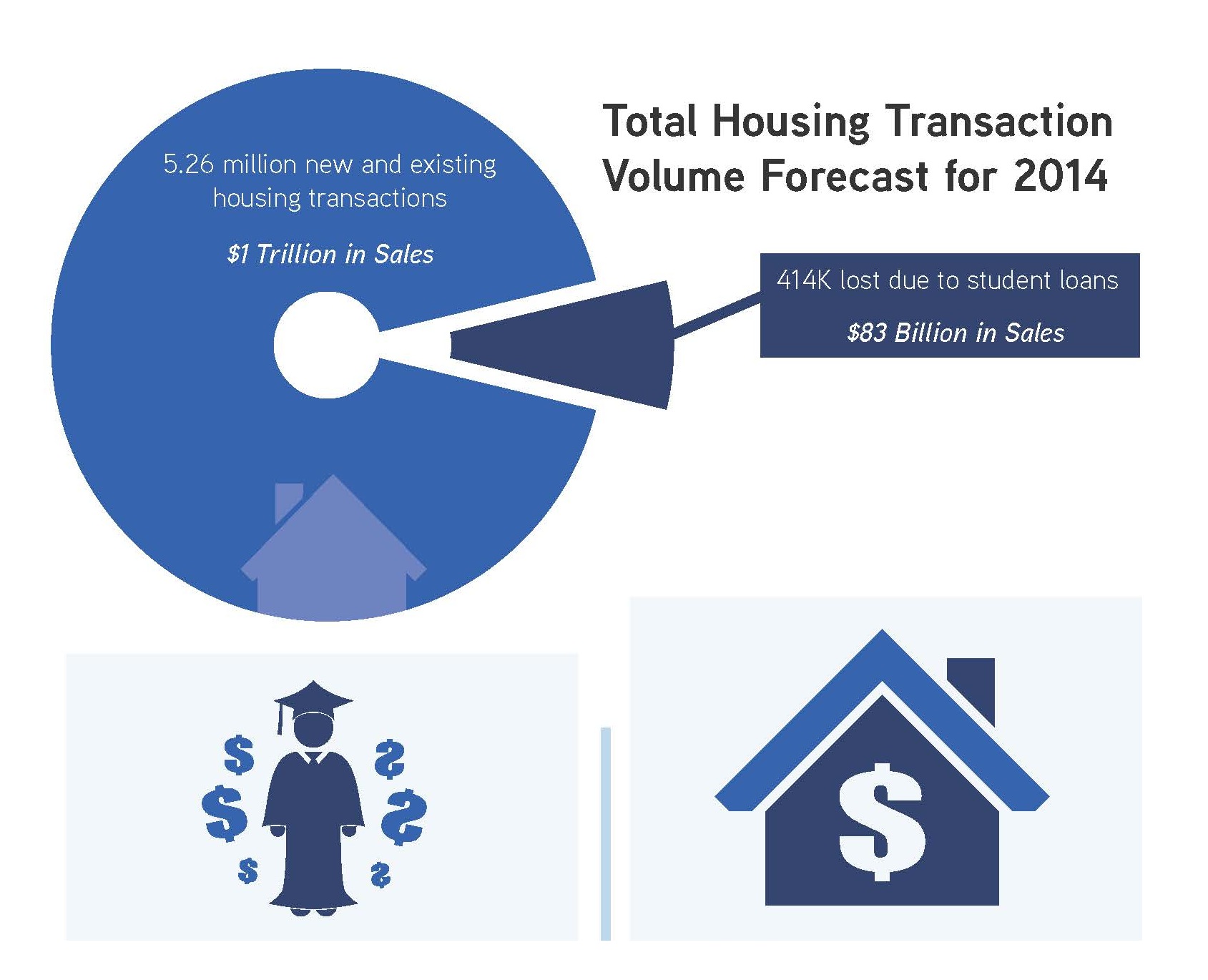Eight percent fewer homes will transact in 2014 than normal, purely due to student loan debt, according to analysis by Rick Palacios, Jr., and Ali Wolf of John Burns Real Estate Consulting.
In a new 30-page paper, the firm assesses the impact of student loans on home buying for households under the age of 40. Its conclusion: 414,000 transactions will be lost in 2014 due to student debt. At a typical price of $200,000, that equals $83 billion in lost volume.
Palacios and Wolf explain their methodology and findings:
The analysis was quite complicated and involved a few assumptions, but we believe it is conservative, primarily because we looked only at those under the age of 40 with student debt.
At a high level, the math is as follows:
• Student debt has ballooned from $241 billion to $1.1 trillion in just 11 years.
• 29 million of the 86 million people aged 20-39 have some student debt.
• Those 29 million individuals translate to 16.8 million households.
• Of the 16.8 million households, 5.9 million (or 35%) pay more than $250 per month in student loans, which inhibits at least $44,000 per year in mortgage capability for each of them.
• About 8% of the 20-39 age cohort usually buys a home each year, which would be 1.35 million transactions per year.
• Using previous academic literature as a benchmark for our own complicated calculation, we then estimated that today's purchase rate is reduced from the normal 8% depending on the level of student debt--ranging from 6.9% for those paying less than $100 per month in student loans to less than 1% for those paying over $1,300 per month. Other factors contribute to even less entry-level buying today.
While we applaud the increasing education, we need to realize that it comes with a cost known as student debt. We raised the red flag on student debt back in 2011 and continue to believe that this debt will delay homeownership for many, or at least require that they buy a less expensive home.
Related Stories
| Apr 12, 2011
American Institute of Architects announces Guide for Sustainable Projects
AIA Guide for Sustainable Projects to provide design and construction industries with roadmap for working on sustainable projects.
| Apr 11, 2011
Wind turbines to generate power for new UNT football stadium
The University of North Texas has received a $2 million grant from the State Energy Conservation Office to install three wind turbines that will feed the electrical grid and provide power to UNT’s new football stadium.
| Apr 8, 2011
SHW Group appoints Marjorie K. Simmons as CEO
Chairman of the Board Marjorie K. Simmons assumes CEO position, making SHW Group the only firm in the AIA Large Firm Roundtable to appoint a woman to this leadership position
| Apr 5, 2011
Zaha Hadid’s civic center design divides California city
Architect Zaha Hadid is in high demand these days, designing projects in Hong Kong, Milan, and Seoul, not to mention the London Aquatics Center, the swimming arena for the 2012 Olympics. But one of the firm’s smaller clients, the city of Elk Grove, Calif., recently conjured far different kinds of aquatic life when members of the City Council and the public chose words like “squid,” “octopus,” and “starfish” to describe the latest renderings for a proposed civic center.
| Apr 5, 2011
Are architects falling behind on BIM?
A study by the National Building Specification arm of RIBA Enterprises showed that 43% of architects and others in the industry had still not heard of BIM, let alone started using it. It also found that of the 13% of respondents who were using BIM only a third thought they would be using it for most of their projects in a year’s time.











